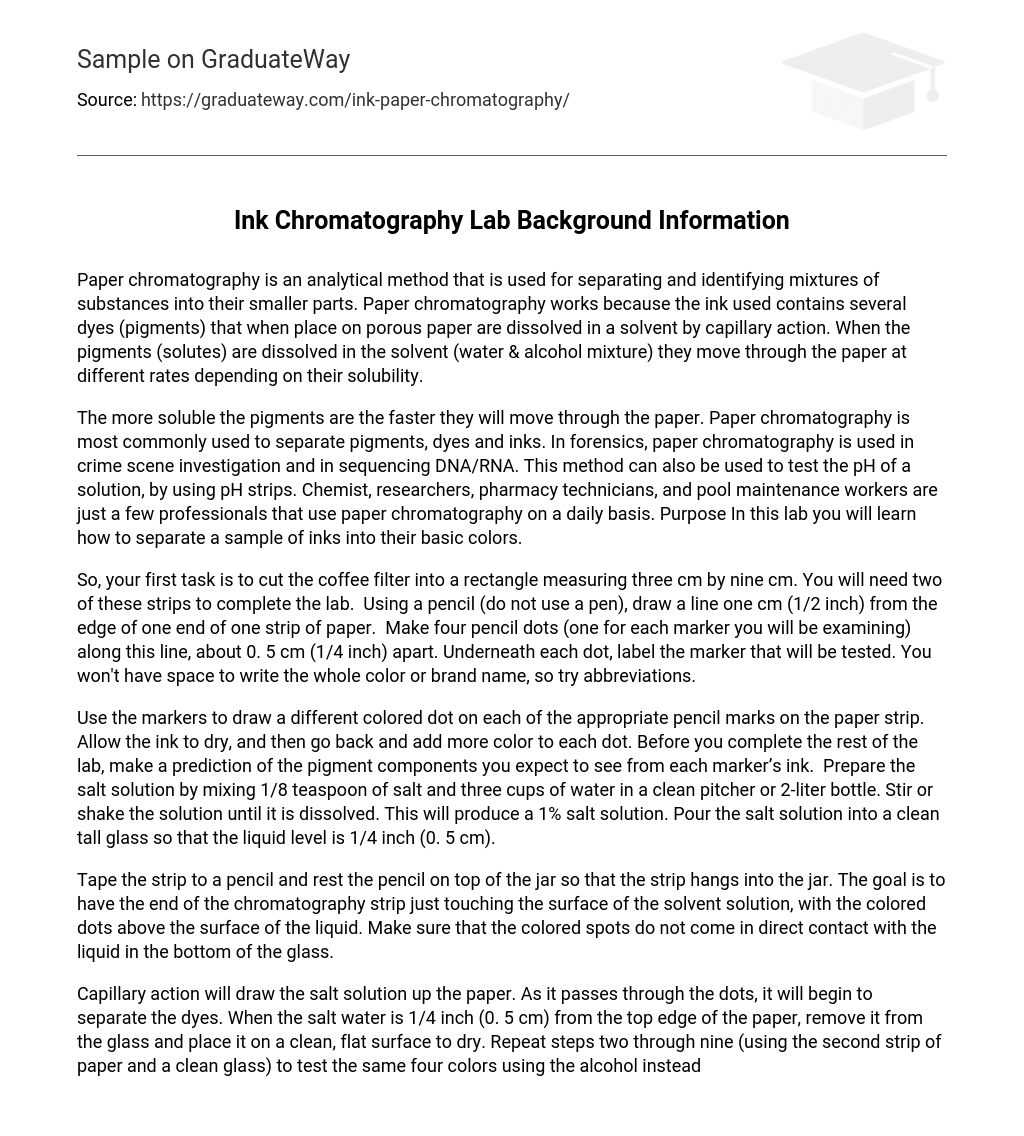Paper chromatography is a technique that involves analyzing mixtures and identifying their separate constituents. This method includes dissolving ink dyes on porous paper with a solvent. As a result, the pigments travel through the paper at different speeds depending on their solubility.
The speed at which pigments move through paper is determined by their solubility. Paper chromatography, a commonly used method for separating pigments, dyes, and inks, finds applications in forensics for crime scene investigation and DNA/RNA sequencing. Additionally, this method is utilized by pH strips to determine solution pH. Chemists, researchers, pharmacy technicians, and pool maintenance workers frequently use paper chromatography. The objective of the lab is to showcase the separation of ink samples into their primary colors.
To begin, prepare the coffee filter by cutting it into a 3 cm by 9 cm rectangle. You will need two strips of this size for the experiment. Use a pencil (do not use a pen) to draw a line that is 1 cm (or 1/2 inch) away from one end of the paper strip. Along this line, make four pencil dots with approximately 0.5 cm (or 1/4 inch) between each dot – these dots represent markers that will be analyzed. Below each dot, indicate the marker to be tested using abbreviations instead of writing out the full color or brand name due to space constraints.
Using the markers, color each pencil mark with a colored dot and wait for it to dry. Once dry, add more color to each dot. Before starting the lab, make a prediction about what pigments are in the ink of each marker.
To make the salt solution, mix 1/8 teaspoon of salt with three cups of water in a clean pitcher or 2-liter bottle. Stir or shake until completely dissolved, resulting in a 1% salt solution. Pour the salt solution into a tall glass, filling it up to a liquid level of 1/4 inch (0.5 cm).
Attach the strip to a pencil and position it on top of the jar so that one end of the strip touches the solvent solution, while keeping the colored dots above the liquid’s surface. Ensure that the colored spots do not directly touch the liquid at the bottom of the glass.
Applying the salt solution to the paper causes it to move upwards via capillary action, separating the dyes as it passes through the dots. Once it reaches a distance of 1/4 inch (0.5 cm) from the top edge of the paper, remove it from the glass and allow it to dry on a clean, flat surface.
To test using alcohol instead of saltwater for the four colors at the bottom in another glass, repeat steps two through nine with a new glass and strip of paper.
The hypothesis was confirmed through the paper chromatography experiment, which revealed that black ink can be separated into various colors. The color of black ink is derived from a blend of different colored inks. During the experiment, red, blue, and green colors appeared before ultimately turning into black on the filter paper.
The separation of colors occurred due to variations in their molecular characteristics, particularly their solubility in water and absorption rate by paper. Red ink, being the most soluble and absorbable, displayed the greatest movement. On the other hand, black ink, being the least soluble and absorbable, showed the least movement. Alcohol, as a pure solvent, proved more effective than salt water, which is a mixture. The extent of pigment migration from the front line depends on the duration of time.
If the time is reduced, the migration rate will decrease, and the darker pigments will not separate. Possible errors may involve inaccurate measurements of ink distances traveled and miscalculations of water and color ratios. Using a longer test tube and strip of filter paper could have altered the ratios. Additionally, another undetected color may have been present due to the length of the filter paper.





